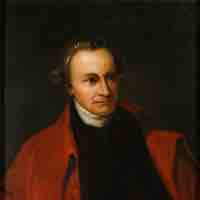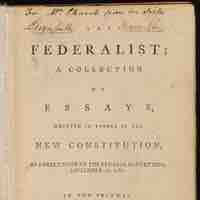Section 3
Ratification and the Bill of Rights
Book
Version 23
By Boundless
By Boundless
Boundless U.S. History
U.S. History
by Boundless
5 concepts

The Ratification Debate
The process of ratifying the proposed United States Constitution led to prolonged debate between Federalists and Anti-Federalists.
Separating Church and State
The Revolution's emphasis on liberty led to provisions for the separation of church from government (state) in the United States Constitution.

Federalists
Federalists supported ratification of the new United States Constitution and published The Federalist Papers to encourage support from the states.
The Anti-Federalists
Anti-Federalists were those opposed to ratification of the US Constitution following the Revolutionary War.
The Bill of Rights
The Bill of Rights refers to the first 10 amendments to the US Constitution, which outline the basic freedoms held by American citizens.